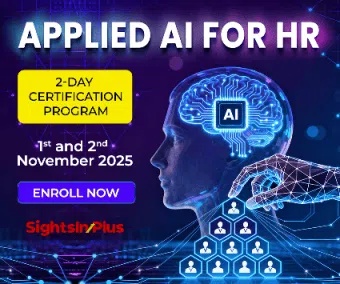Succession Planning is a long term, continuous and structured process where organizations identify top talent and invest in their development so that they take on key leadership positions in future.
For any organization to thrive in perpetuity, people are the most important assets. So the focus needs to be on developing future leaders. Carefully crafted policies and processes are of little use if there are no leaders to drive them and people to execute. Therefore, leadership planning is crucial not only for the survival of the organization, but also for future growth. A well-crafted Succession Planning process is one of the key differentiators of a Structured Organization.
Role of HR in Succession Planning:
In this era of Gig Economy, uncertainties in the market and millennial aspirations, the key challenge for any organization is to develop future leaders, who can take on the reins of leadership head-on.
Success of any strategic initiative depends on three factors – ownership by the top management, engagement at every level and the extent to which HR can bring synergy to drive these initiatives.
HR can drive this process by creating an overall environment and culture around Succession Planning as well as by designing a step-by-step process to ensure that it happens flawlessly.
CREATING AN OVERALL ENVIRONMENT AND CULTURE
It is not a one-time event. It needs to be engrained that it is not something to be discussed only in a review meeting. It is a rigorous process to develop next gen leaders who shall keep the graphs going up by taking on more responsibilities. HR will help to develop this culture to prevail in an organization and imbibe the spirit of developing leaders.
Ownership and engagement: A deeper involvement in this process by the top leadership team will provide the right impetus. This is also to ensure that there is high engagement, acceptance and adherence to this process across the organization. HR will both motivate and nudge the senior leadership towards taking this ownership while encouraging others to be engaged towards this development.
Culture of simplicity: HR needs to simplify, not only the process of implementation but also designing of the assessment criteria, so that it can be easily understood by all.
Basket of opportunities: HR has to formulate and design a transparent process where larger pool of High Potential prospective leaders are covered who can be tried, tested and groomed, rather than a mere handful. Have an agenda to discuss about the key leadership roles prevalent and if anyone is ready to step into these roles.
Developing second-in-line leadership: Having the propensity to spot right talent and groom them, active job rotations and taking calculated risk to entrust more responsible roles to younger talent will make the organization future ready. It need not necessarily be a perfect fit, however, grooming for a possible future role can be considered.
ON DESIGNING THE STEP BY STEP PROCESS:
- Recognize the average age of the organization
- Have a comprehensive list of key leadership roles
- Devise a mechanism to identify high performers with high aspirations and future orientation
- Design a robust ‘potential’ assessment framework
- Be sensitive to any specific key challenges or constraints
- Structured process for capability building through Mentoring, coaching etc.
Health, growth and stability of an organization depend on successful implementation of Succession Plan and not just its design, which is where HR plays a key role.



